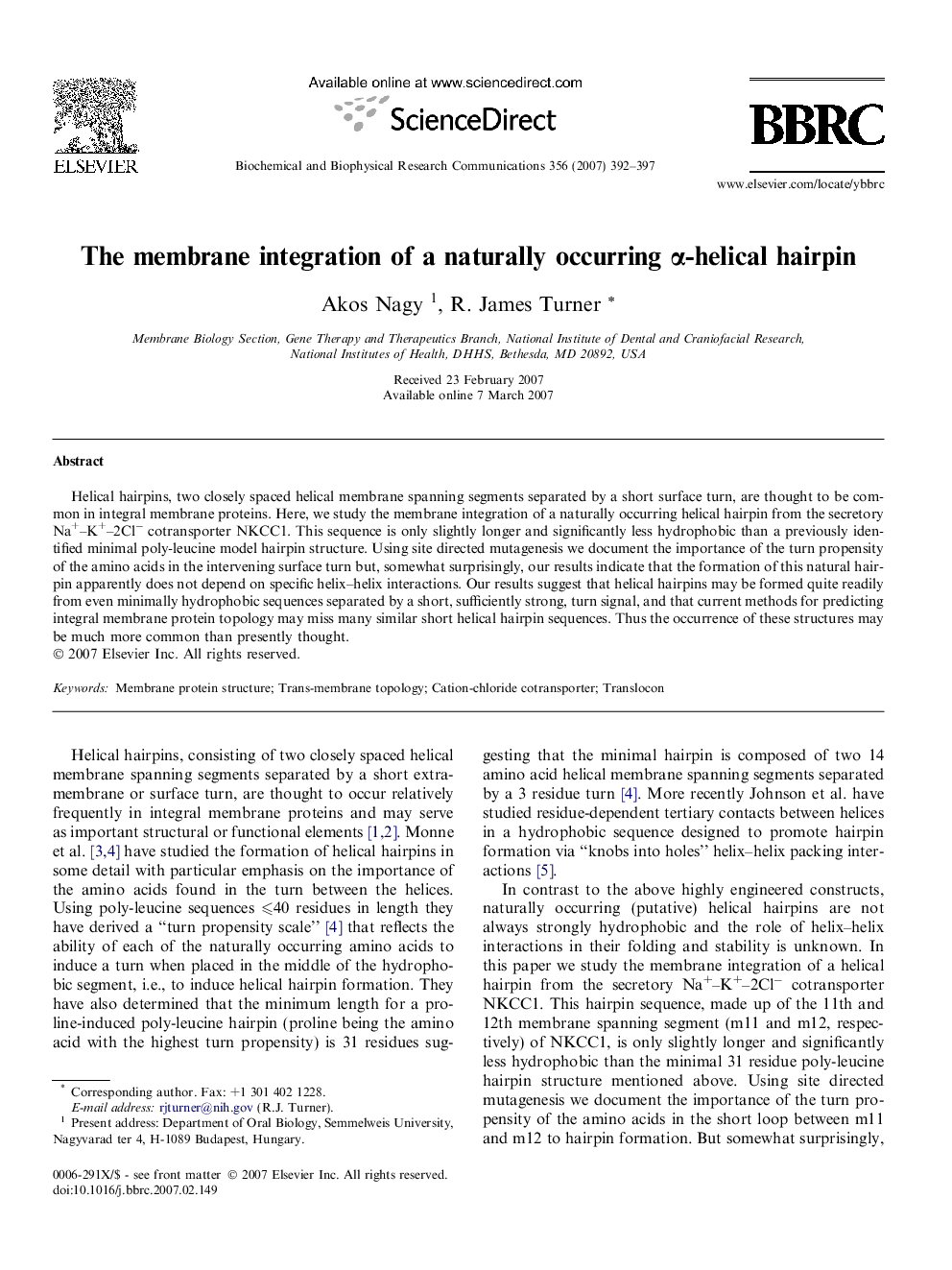| Article ID | Journal | Published Year | Pages | File Type |
|---|---|---|---|---|
| 1938590 | Biochemical and Biophysical Research Communications | 2007 | 6 Pages |
Abstract
Helical hairpins, two closely spaced helical membrane spanning segments separated by a short surface turn, are thought to be common in integral membrane proteins. Here, we study the membrane integration of a naturally occurring helical hairpin from the secretory Na+-K+-2Clâ cotransporter NKCC1. This sequence is only slightly longer and significantly less hydrophobic than a previously identified minimal poly-leucine model hairpin structure. Using site directed mutagenesis we document the importance of the turn propensity of the amino acids in the intervening surface turn but, somewhat surprisingly, our results indicate that the formation of this natural hairpin apparently does not depend on specific helix-helix interactions. Our results suggest that helical hairpins may be formed quite readily from even minimally hydrophobic sequences separated by a short, sufficiently strong, turn signal, and that current methods for predicting integral membrane protein topology may miss many similar short helical hairpin sequences. Thus the occurrence of these structures may be much more common than presently thought.
Related Topics
Life Sciences
Biochemistry, Genetics and Molecular Biology
Biochemistry
Authors
Akos Nagy, R. James Turner,
